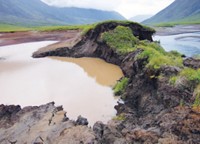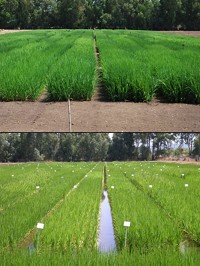Advertisement
Grab your lab coat. Let's get started
Welcome!
Welcome!
Create an account below to get 6 C&EN articles per month, receive newsletters and more - all free.
It seems this is your first time logging in online. Please enter the following information to continue.
As an ACS member you automatically get access to this site. All we need is few more details to create your reading experience.
Not you? Sign in with a different account.
Not you? Sign in with a different account.
ERROR 1
ERROR 1
ERROR 2
ERROR 2
ERROR 2
ERROR 2
ERROR 2
Password and Confirm password must match.
If you have an ACS member number, please enter it here so we can link this account to your membership. (optional)
ERROR 2
ACS values your privacy. By submitting your information, you are gaining access to C&EN and subscribing to our weekly newsletter. We use the information you provide to make your reading experience better, and we will never sell your data to third party members.
Environment
Arsenic In The Air
Geochemistry: Researchers link natural arsenic emissions to soil carbon content
by Charles Schmidt
February 10, 2011

Microbes in the soil of rice paddies or forest floors convert inorganic arsenic into a group of toxic organoarsenic gases called arsines. Scientists have long known about this process in arsenic's life cycle, but knew very little about its details or significance. Now researchers report the first field measurements of arsine, which could help scientists understand how arsenic accumulates in contaminated soil (Environ. Sci. Technol., DOI: 10.1021/es103463d).
In countries such as Bangladesh, people grow rice in paddies contaminated by arsenic in the groundwater. Scientists model how much arsenic can accumulate in the soil by studying how it moves from geological settings to biological ones and back. Two ways that arsenic leaves the paddies are by washing away in flood waters or by wafting into the atmosphere as arsines, a process called biovolatilization.
Researchers knew little about the extent of biovolatilization because arsines are difficult to measure. Previously, researchers collected arsine from air samples using "cryotraps" that condense gases onto a frigid surface. Cryotraps have to stay cold, however, which makes them impractical for field research. So Andrew Meharg, a professor at the University of Aberdeen, in the U.K., and his colleagues developed a trap that captures different species of arsine when the gases adsorb onto silica gel impregnated with silver nitrate. Imbedded in the gel, arsine gas samples can be stored for months at ambient temperature.
For their current study, Meharg and his colleagues sampled arsine emanating from a range of soil types across the globe, including rice paddy soils fed by arsenic-contaminated groundwater, soils contaminated by arsenic-containing mine tailings, and soils from an uncontaminated mangrove forest. They used mass spectroscopy to quantify the arsine caught by their traps.
The researchers found that arsine levels depend more on a soil's organic content than on its arsenic concentrations. The highest arsine emission levels—up to 240 mg per hectare per year—occurred in organic-rich rice paddy soils contaminated with 11.3 ppm arsenic, while the lowest arsine levels—below the method's limit of detection—were detected in less-organic mine tailings, containing about 1,300 ppm arsenic.
Meharg is not sure why organic matter is so important. He thinks that anaerobic microbes use organic matter as a substrate to reduce arsenic. The bacteria then can methylate the reduced arsenic to produce arsine gas, he says.
David Polya, a professor of geochemistry at the University of Manchester, in the U.K., calls the work "a major contribution" because it suggests that previous estimates of the amount of biovolatilization were off by an order of magnitude. Scientists thought that the process accounted for 58% of natural arsenic emissions to the air, he says. But, extrapolating the study's measurements globally suggests a far lower range of 2 to 6%, Polya says. Meharg points out that lower levels of biovolatilization mean other mechanisms of arsenic removal, such as by flood waters, play a greater role in contaminated soils than previously thought.




Join the conversation
Contact the reporter
Submit a Letter to the Editor for publication
Engage with us on Twitter